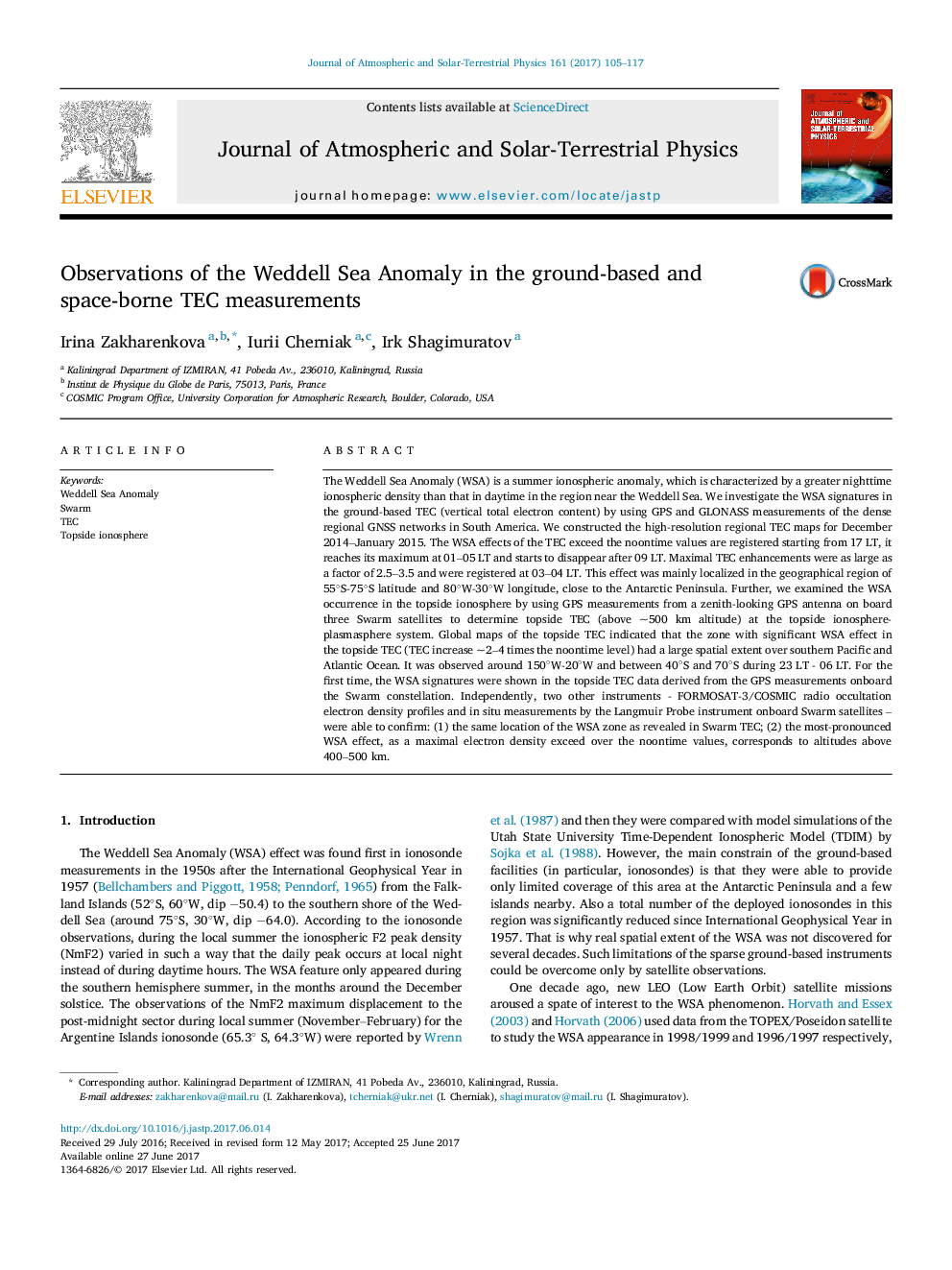| Article ID | Journal | Published Year | Pages | File Type |
|---|---|---|---|---|
| 5487593 | Journal of Atmospheric and Solar-Terrestrial Physics | 2017 | 13 Pages |
Abstract
The Weddell Sea Anomaly (WSA) is a summer ionospheric anomaly, which is characterized by a greater nighttime ionospheric density than that in daytime in the region near the Weddell Sea. We investigate the WSA signatures in the ground-based TEC (vertical total electron content) by using GPS and GLONASS measurements of the dense regional GNSS networks in South America. We constructed the high-resolution regional TEC maps for December 2014-January 2015. The WSA effects of the TEC exceed the noontime values are registered starting from 17 LT, it reaches its maximum at 01-05 LT and starts to disappear after 09 LT. Maximal TEC enhancements were as large as a factor of 2.5-3.5 and were registered at 03-04 LT. This effect was mainly localized in the geographical region of 55°S-75°S latitude and 80°W-30°W longitude, close to the Antarctic Peninsula. Further, we examined the WSA occurrence in the topside ionosphere by using GPS measurements from a zenith-looking GPS antenna on board three Swarm satellites to determine topside TEC (above â¼500 km altitude) at the topside ionosphere-plasmasphere system. Global maps of the topside TEC indicated that the zone with significant WSA effect in the topside TEC (TEC increase â¼2-4 times the noontime level) had a large spatial extent over southern Pacific and Atlantic Ocean. It was observed around 150°W-20°W and between 40°S and 70°S during 23 LT - 06 LT. For the first time, the WSA signatures were shown in the topside TEC data derived from the GPS measurements onboard the Swarm constellation. Independently, two other instruments - FORMOSAT-3/COSMIC radio occultation electron density profiles and in situ measurements by the Langmuir Probe instrument onboard Swarm satellites - were able to confirm: (1) the same location of the WSA zone as revealed in Swarm TEC; (2) the most-pronounced WSA effect, as a maximal electron density exceed over the noontime values, corresponds to altitudes above 400-500 km.
Keywords
Related Topics
Physical Sciences and Engineering
Earth and Planetary Sciences
Geophysics
Authors
Irina Zakharenkova, Iurii Cherniak, Irk Shagimuratov,
